When it comes to understanding the unique characteristics of animals, one question that often arises is about their digestive systems. In particular, the horse, with its majestic stature and herbivorous diet, prompts curiosity about its digestive anatomy. So, how many stomachs does a horse have? Unlike their ruminant counterparts that have multi-chambered stomachs, horses possess a comparatively simpler digestive system.
- Horses are non-ruminant herbivores, which means they have a single-chambered stomach.
- The horse’s stomach is relatively small, comprising only about 9-10% of the total gastrointestinal tract volume.
- Given its size, the horse’s stomach is suited to smaller, more frequent meals, reflecting their natural grazing habits.
Insights into Equine Digestive Mechanics
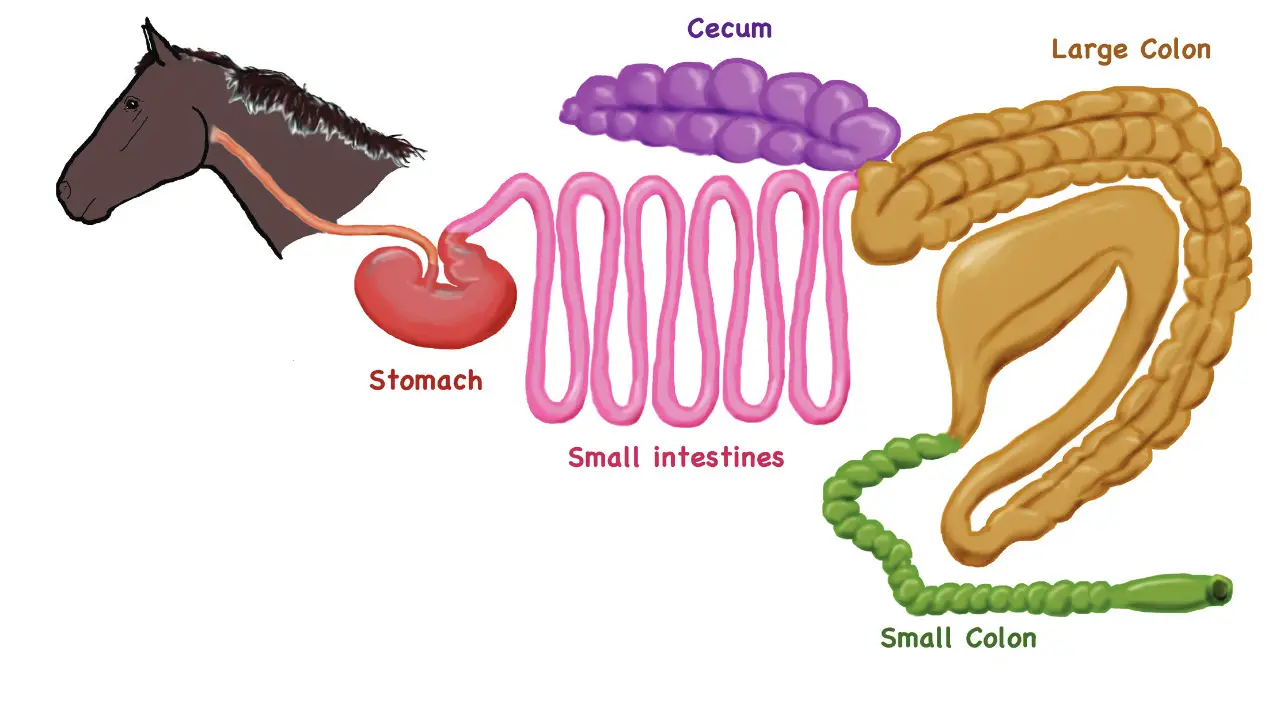
The inner workings of the equine digestive tract are built to optimize the extraction of energy from plant material. Knowledge of this system’s functionality is crucial for those responsible for equine care, affecting dietary management and overall welfare. Its design allows for a consistent intake of fodder, transforming it into energy needed for various equine activities.
Efficient Fibrous Plant Processing in Equines
The horse’s digestive tract has developed to effectively handle a diet rich in fiber, exhibiting their natural behavior as perpetual foragers. The horse’s digestive process begins with the physical reduction of food in the mouth and continues with the conversion of nutrients in the single-chambered stomach and intestines.
- Chewing is the horse’s primary means of reducing food size, which is essential for the subsequent digestion phases.
- Saliva plays a role in the initial enzymatic breakdown, preparing the food for further digestion in the stomach.
Dental Health: Critical for Initial Digestion
The role of the horse’s teeth is indispensable in the digestive process. The incisors and molars work in tandem to prepare the feed for digestion, while salivary enzymes initiate the process even before the feed reaches the stomach.
Role of Stomach Acids and Enzymes
As the feed enters the stomach, it is met with acids and enzymes crucial for protein digestion. The precise regulation of these elements is vital in starting the digestive process and preparing the food for the small intestine.
Importance of Pre-Stomach Digestion
The significance of the initial stages of digestion is heightened in horses due to their single stomach. The effectiveness of this stage can greatly influence the horse’s overall digestive efficiency. Ensuring good dental health is a key aspect of promoting effective early digestion.
Comprehensive Enzymatic Breakdown
A variety of enzymes are produced by the horse to aid in the breakdown of feed components. These enzymes, which include amylase, lipase, and protease, are pivotal in ensuring the feed is properly processed for nutrient absorption.
Adapting Feeding Practices to Digestive Needs
Despite the horse’s singular stomach, the digestive system functions remarkably well in nutrient absorption. By understanding the specifics of monogastric digestion in horses, caretakers can devise diets that cater to the animal’s physiological demands, fostering digestive efficiency and reducing health risks.
Delving into the Anatomy and Functionality of the Equine Stomach
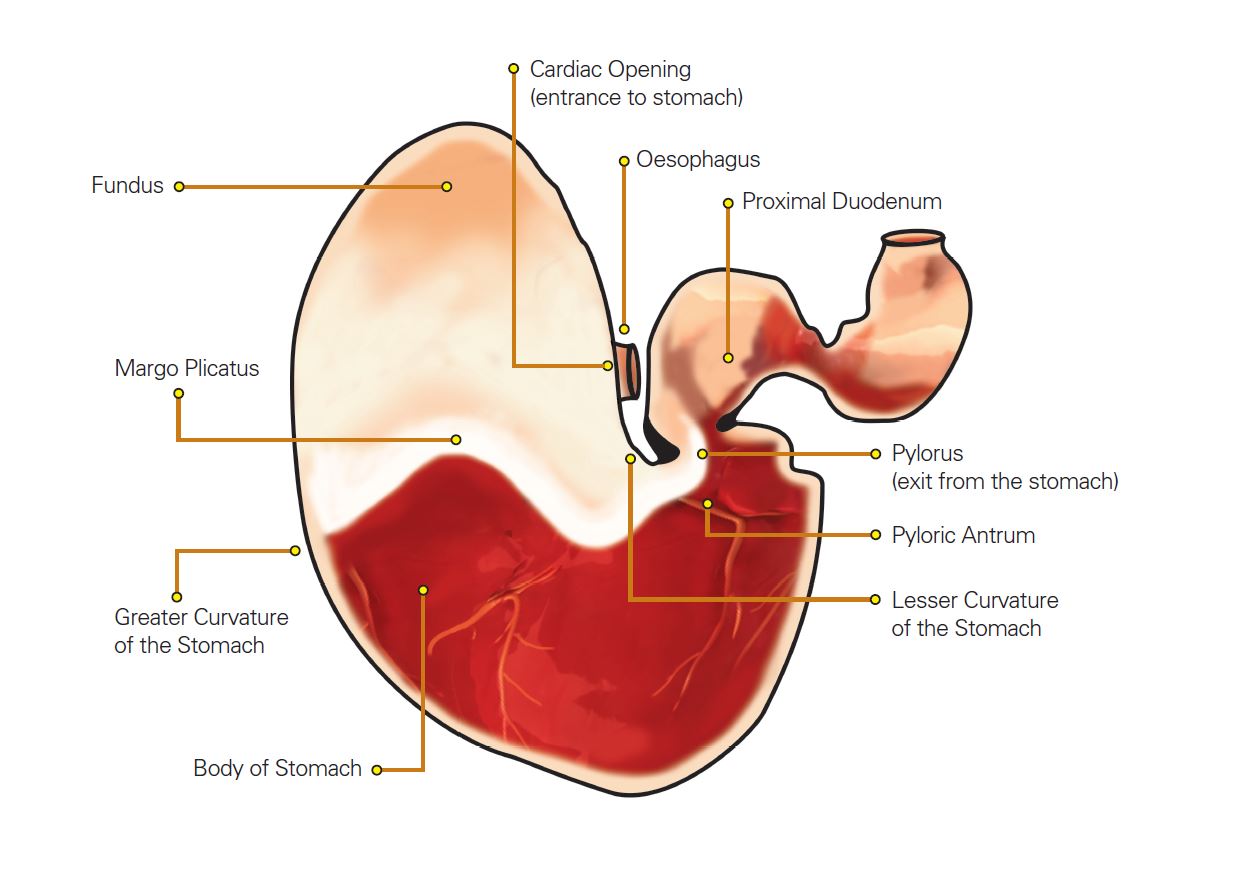
The muscular structure of the horse’s stomach is designed to meet the requirements of its herbivorous grazing habits. This organ is integral to the horse’s health and performance, ensuring efficient nutrient digestion and absorption.
Specialized Features of the Horse’s Digestive Organ
The horse’s stomach is characterized by a mucus layer that safeguards against the acidic digestive fluids necessary for food breakdown. This protection is particularly robust in the area responsible for acid and enzyme production.
- With a limited volume, the horse’s stomach can only accommodate a certain quantity of feed at once, which is in line with their natural eating patterns.
- The presence of the cardiac sphincter, a strong muscular valve, aids in the controlled flow of ingested material and prevents reflux.
- There are two distinct regions within the stomach lining, each playing a crucial role in the digestive process.
Significance of Gastric Secretions
Digestive fluids, including hydrochloric acid and enzymes, are secreted by the glandular section of the stomach lining, which are key for protein breakdown. Meanwhile, the less protected non-glandular area is where the feed is initially stored and begins to mix with saliva.
Managing Gastric Health in Horses
Equine Gastric Ulcer Syndrome (EGUS) is a prevalent condition marked by stomach lining erosion due to acid exposure. Stress, limited mobility, and diets that deviate from natural grazing patterns can increase EGUS risk.
- Indicators of EGUS include behavioral changes and diminished performance or condition.
- To prevent EGUS, it is advisable to employ dietary measures that replicate natural feeding behaviors, such as providing consistent access to forage and small, regular meals.
Integration with the Digestive System
The stomach’s role is pivotal, but it must work in harmony with subsequent organs in the digestive tract. The food, partially digested in the stomach, progresses to the small intestine for additional enzymatic breakdown. The rate of gastric emptying is essential to maintaining digestive equilibrium.
Diet’s Influence on Gastric Performance
The dietary composition influences the stomach’s functioning and the horse’s overall digestive health. A diet with adequate fiber content is beneficial, while high-concentrate diets may lead to gastric issues. Properly balancing roughage and concentrates is critical for healthy stomach operations.
Supporting Digestive Health Through Nutrition
Implementing dietary strategies that consider the specifics of equine digestion can support the stomach’s function and overall digestive health. Balanced nutrient provision along with sufficient forage supports effective digestion and helps avert digestive complications.
Ensuring Gastric Wellness
Proactive monitoring of gastric health is essential for early detection and prevention of more serious conditions. Gastroscopy, performed by a veterinarian, can reveal early signs of ulcers or other abnormalities, highlighting the importance of preventive care in maintaining a healthy equine stomach.
Understanding the Equine Stomach’s Role in Digestion
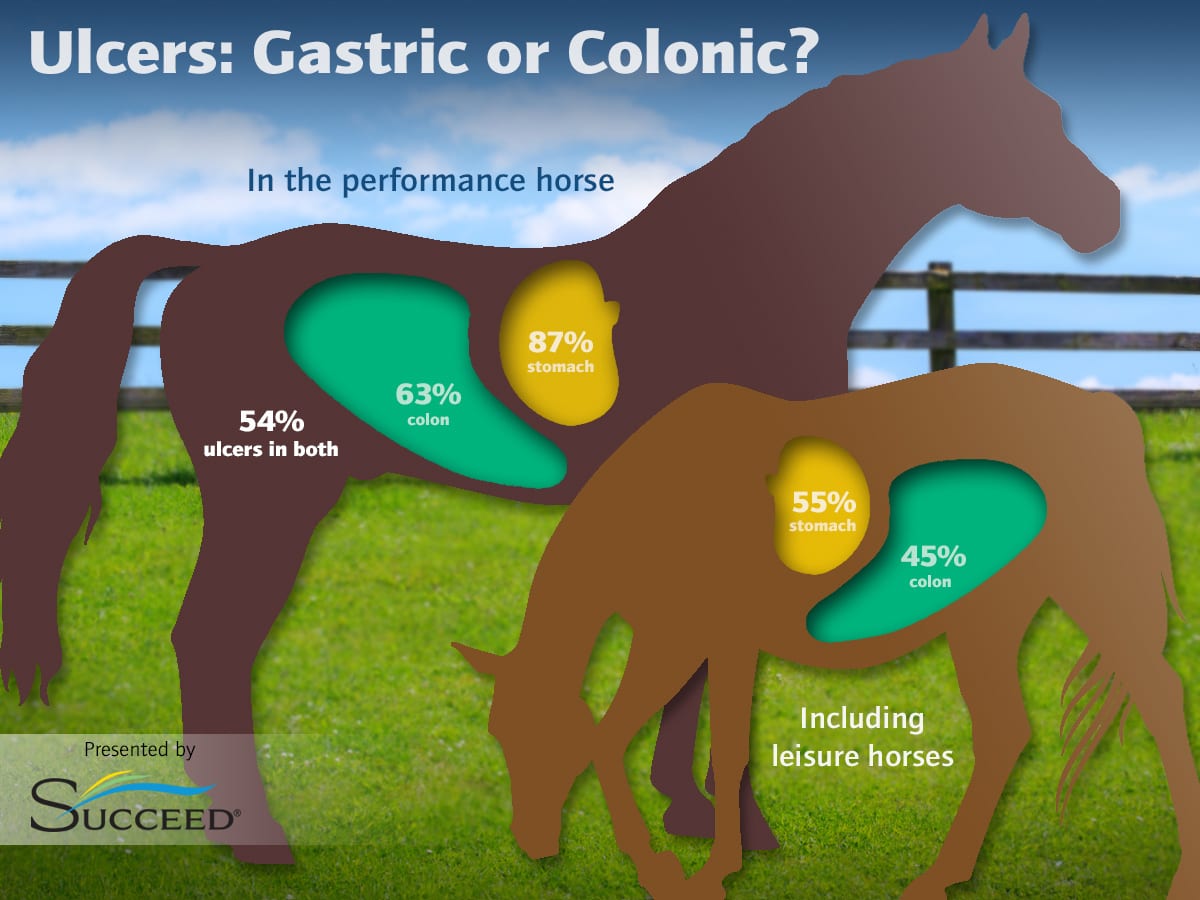
Equines are monogastric animals with a single stomach that is essential for initiating the digestion of their herbivorous diet. This organ is pivotal for processing the forage they consume continuously throughout the day before it moves on to the intestines.
Stomach Structure and Digestive Efficiency
The equine stomach, though a singular structure, exhibits impressive adaptability and resilience in its digestive function. Its moderate volume aligns with the horse’s requirement for smaller, frequent meals and showcases the evolutionary efficiency of these animals in foraging and processing fibrous plants.
- Adjustability in the stomach size accommodates varying meal frequencies.
- A specialized mucosal lining protects against the corrosive nature of stomach acids.
- Internal stomach regions have specialized cells that perform distinct digestive functions.
Optimizing Digestion in a Single Stomach
Despite having only one stomach, horses are adept at initiating the breakdown of food through a finely-tuned gastric environment. This optimization is vital for the subsequent enzymatic digestion in the small intestine.
- Gastric acidity is crucial for enzyme function in protein digestion.
- Stomach motility aids in the physical breakdown of food, increasing the surface area for enzymes.
Dietary Adaptations for Gastric Health
A horse’s diet is intrinsically linked to the health and functionality of its stomach. Diets that stray from natural foraging habits, especially those high in concentrates, can disrupt gastric health. It is important to replicate natural eating patterns to support the horse’s digestive system.
- A diet rich in forage aligns with the horse’s natural digestive processes.
- Concentrates should be introduced cautiously to prevent overburdening the stomach.
- Regular access to water is imperative for smooth digestive operations and hydration.
Equine Digestion Versus Ruminant Digestion
Comparing equine digestion to that of ruminants provides insight into the diverse strategies herbivores use to derive nutrients from plant sources. Horses have evolved to effectively use a single-chambered stomach for digestion, while ruminants have developed a complex multi-chambered system for more extensive fermentation.
- Horses’ singular stomach is efficient for their continuous grazing.
- Ruminants re-chew and ferment their food to extract nutrients.
Feeding Strategies for Horses’ Digestive Health
Proper feeding strategies are essential to support the health of a horse’s single stomach. This involves providing a diet that emulates natural grazing patterns, rich in forage and fiber, to ensure smooth and efficient digestion.
- Quality forage should form the bulk of the diet to maintain gastric health.
- Concentrate supplements should be tailored to the horse’s individual energy needs.
- Sudden dietary changes are to be avoided to protect the delicate gastric environment.
To encapsulate, horses possess a single stomach adept at managing their dietary habits, emphasizing the importance of knowledgeable nutritional management to support their digestive health.
Exploring the Complexities of Equine Digestion
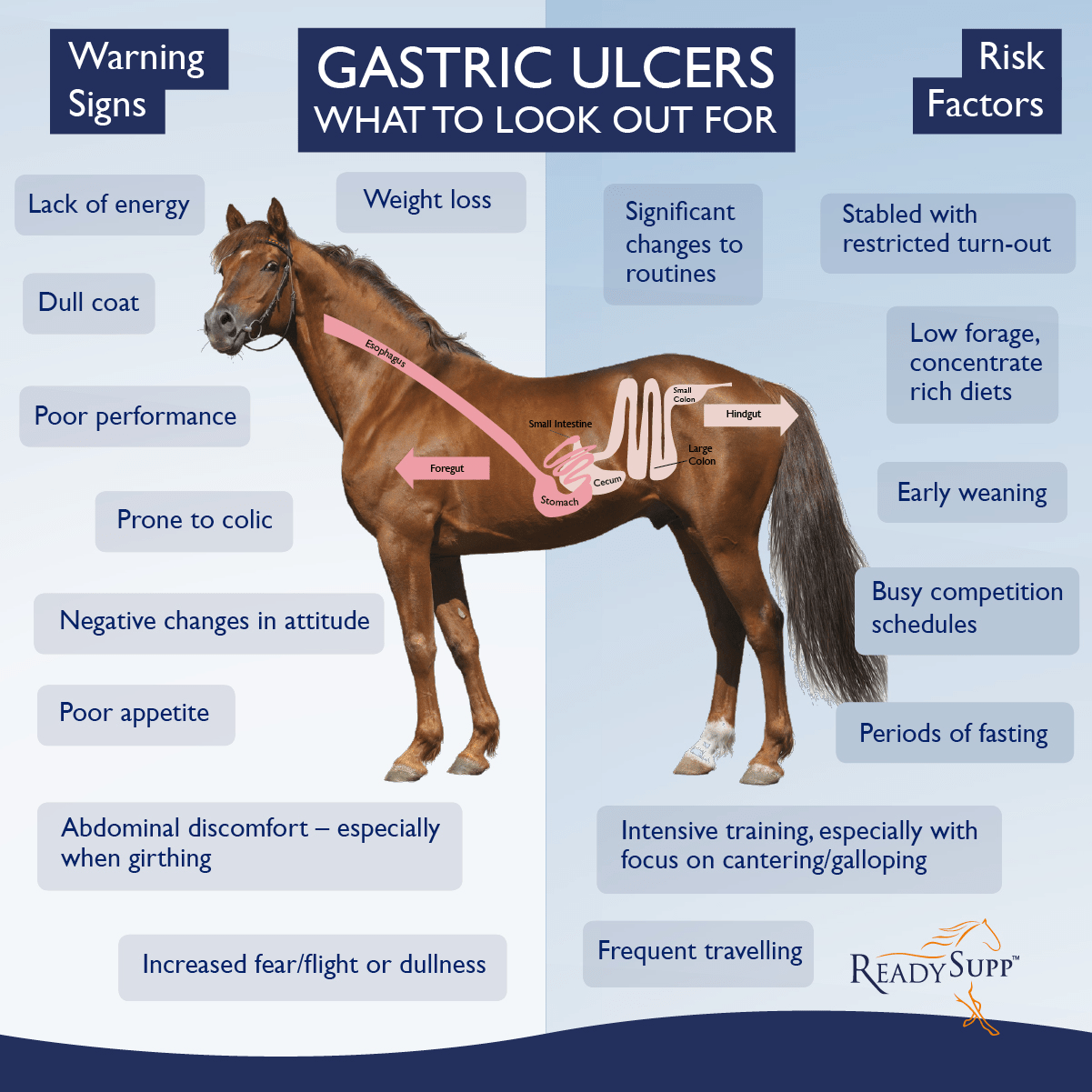
The horse gastrointestinal tract is a sophisticated system that exemplifies evolutionary ingenuity, tailored to extract nutrients from a plant-based diet. The interplay of different organs in this tract is critical for maintaining the health and performance of these noble creatures.
The Journey of Food: Oral Cavity to Esophagus
Digestion in horses starts with the mechanical action of chewing, a process during which the teeth and saliva play a vital role. As horses ingest their feed, the teeth work to effectively break down the fibrous components, while saliva lubricates the food for its transit through the esophagus.
Diversity of Dental Anatomy
- Incisors function to cut forage.
- Canines, mostly in stallions, have a minimal role in feeding.
- Premolars and molars are responsible for grinding feed into a digestible consistency.
The Equine Stomach’s Digestive Role
The equine stomach is designed to commence the breakdown of food, making it ready for further digestion and absorption in the intestines. With its two distinct regions, it has developed a delicate balance between the need for acid production and protective mechanisms against potential damage.
Distinctive Gastric Regions
- The glandular section is responsible for secreting mucus and enzymes for digestion.
- The non-glandular section, more prone to acid-related issues, benefits from strategic feeding regimens.
Strategies for Gastric Protection
While the glandular region is naturally protected against its own acidity, the non-glandular region requires a steady forage intake and careful dietary planning to preserve its health and prevent ulceration.
Enzymatic Breakdown in the Small Intestine
Following gastric digestion, the chyme proceeds to the small intestine, a primary site for absorption of nutrients. The small intestine’s three segments work in harmony to break down various macronutrients through enzymatic action, facilitating their assimilation into the bloodstream.
Three Segments of the Small Intestine
- The duodenum, where active enzyme secretion commences.
- The jejunum, the main site for nutrient and water absorption.
- The ileum, the last part before the ingesta moves into the large intestine.
The Role of the Hindgut in Fiber Digestion
The horse’s hindgut acts as a fermentation vat, with a diverse microbiome that helps extract energy from cellulose, thus allowing horses to thrive on a high-fiber diet. This part of the digestion process is critical for breaking down fibrous matter that was not digested earlier.
Components of the Equine Hindgut
- The cecum, initiating the fermentation.
- The large colon, which continues fermentation and nutrient absorption.
- The small colon, where water is reabsorbed and feces take shape.
- The rectum, storing feces prior to evacuation.
The Fermentation Process and Vitamin Synthesis
In the hindgut, the fermentation of fiber leads to the production of volatile fatty acids and certain vitamins, essential for the horse’s energy needs and health.
Harmony Amongst Digestive Components
Each segment of the horse gastrointestinal tract plays a vital role in the overall process of digestion, from the initial mechanical breakdown to the intricate microbial digestion in the stomach and hindgut, ensuring the horse’s well-being.
Exploring the Complexities of Equine Digestion
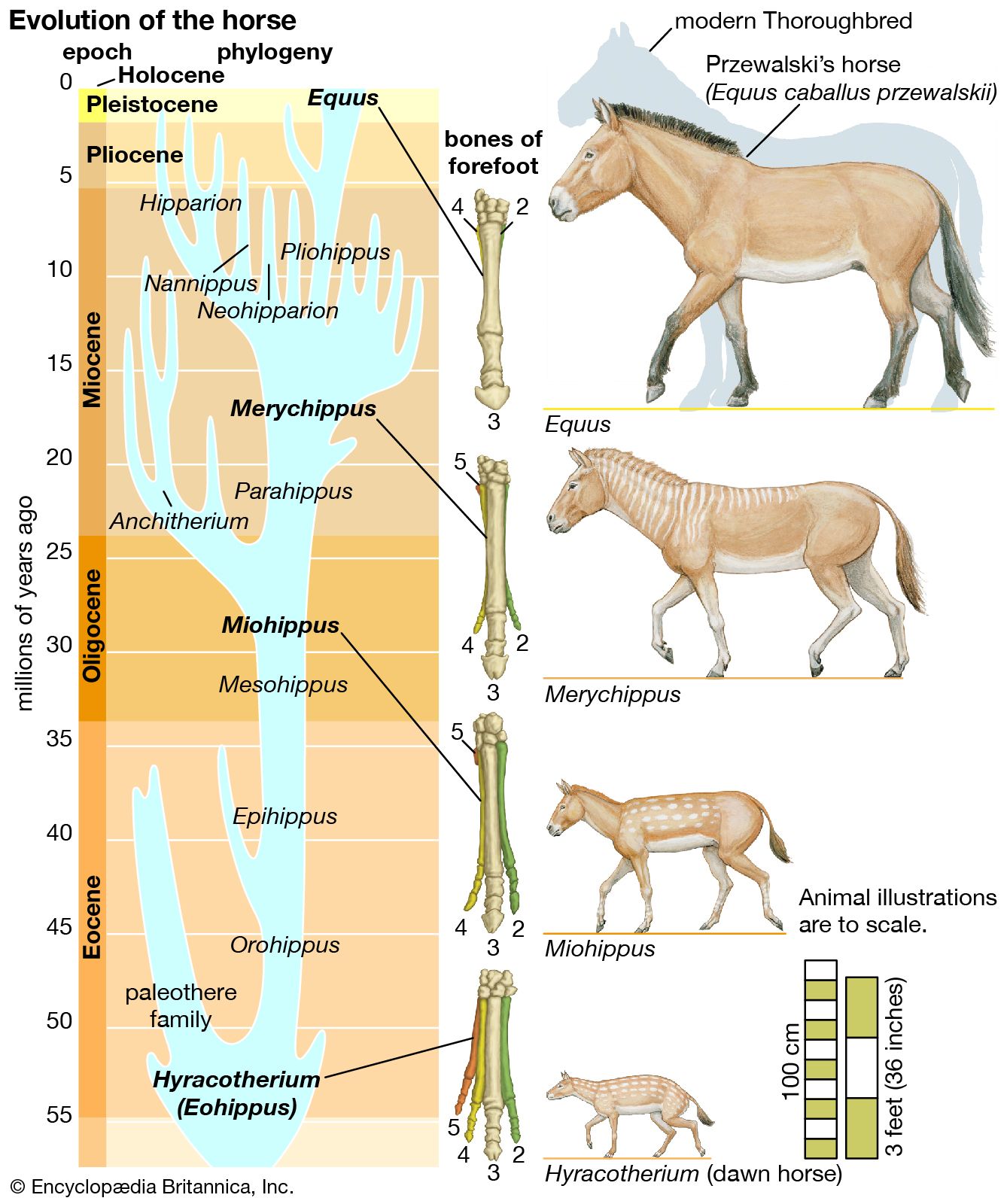
Understanding the intricacies of equine digestion requires a closer look at the interactions between anatomical structures and dietary habits. Each part of the digestive system, from the efficiency of chewing to the chemical processes in the intestines, plays a crucial role in maintaining the health and vitality of horses. Recognizing the synergy between these elements is essential for developing nutritional strategies that promote equine well-being.
Chewing Dynamics and Salivary Significance
The digestion process in horses is greatly affected by how effectively they chew their food and the amount of saliva produced. Chewing not only physically breaks down the feed but also prompts the secretion of saliva, which has several functions:
- Initiating carbohydrate breakdown.
- Providing lubrication to ease swallowing.
- Neutralizing stomach acids to protect the gastric lining.
Offering high-fiber forage that encourages thorough chewing is vital for preserving gastric health and preventing digestive issues.
Influences on Salivary Output
The quantity of saliva that a horse generates can be affected by various factors, including the nature of its feed. For example:
- Consuming dry hay prompts extensive chewing, leading to increased saliva.
- Feeding less fibrous concentrates may result in less saliva production.
A balanced diet that encourages sufficient saliva production is crucial for the smooth functioning of equine digestion.
Nutrition and Feeding Habits Affecting Digestive Function
Nutritionists who specialize in equine health stress the need to mimic natural grazing behaviors for horses in managed care. The equine digestive system is adapted to process food in small, continuous portions. Therefore, dietary and feeding approaches should be aligned with this natural pattern:
- Regular meals help avoid overfilling the stomach and promote continuous digestion.
- A fiber-rich diet ensures a gradual nutrient flow.
- Providing access to pasture or quality hay simulates natural foraging and supports healthy digestive processes.
Adhering to the horse’s instinctual dietary patterns can help lower the likelihood of digestive disturbances such as colic.
Saliva’s Role in Digestive Wellness
Recognizing the link between a horse’s chewing pace, saliva production, and its overall digestive well-being is crucial. A deliberate and steady chewing rhythm enhances saliva output, which benefits digestion through:
- Improving initial food processing.
- Enhancing protection against stomach acid.
- Aiding the movement of food through the digestive system.
Nutritional Considerations for Salivary Health
Effective dietary management is key to optimizing saliva production, an essential component of healthy digestion. Strategies include:
- Ensuring constant access to clean water to maintain hydration.
- Offering a combination of hay and pasture to encourage chewing and saliva flow.
- Evaluating the use of dietary supplements that may increase salivation.
Implementing these methods helps maintain a balanced digestive system in horses.
Comprehending the nuances of horse digestion facts, particularly the importance of saliva, empowers caretakers to devise feeding plans that respect and enhance the horse’s natural digestive functions. This understanding is key to fostering a deeper bond with these remarkable animals and ensuring their well-being and longevity.
Comparative Anatomy: Single Stomach Animals vs. Ruminants
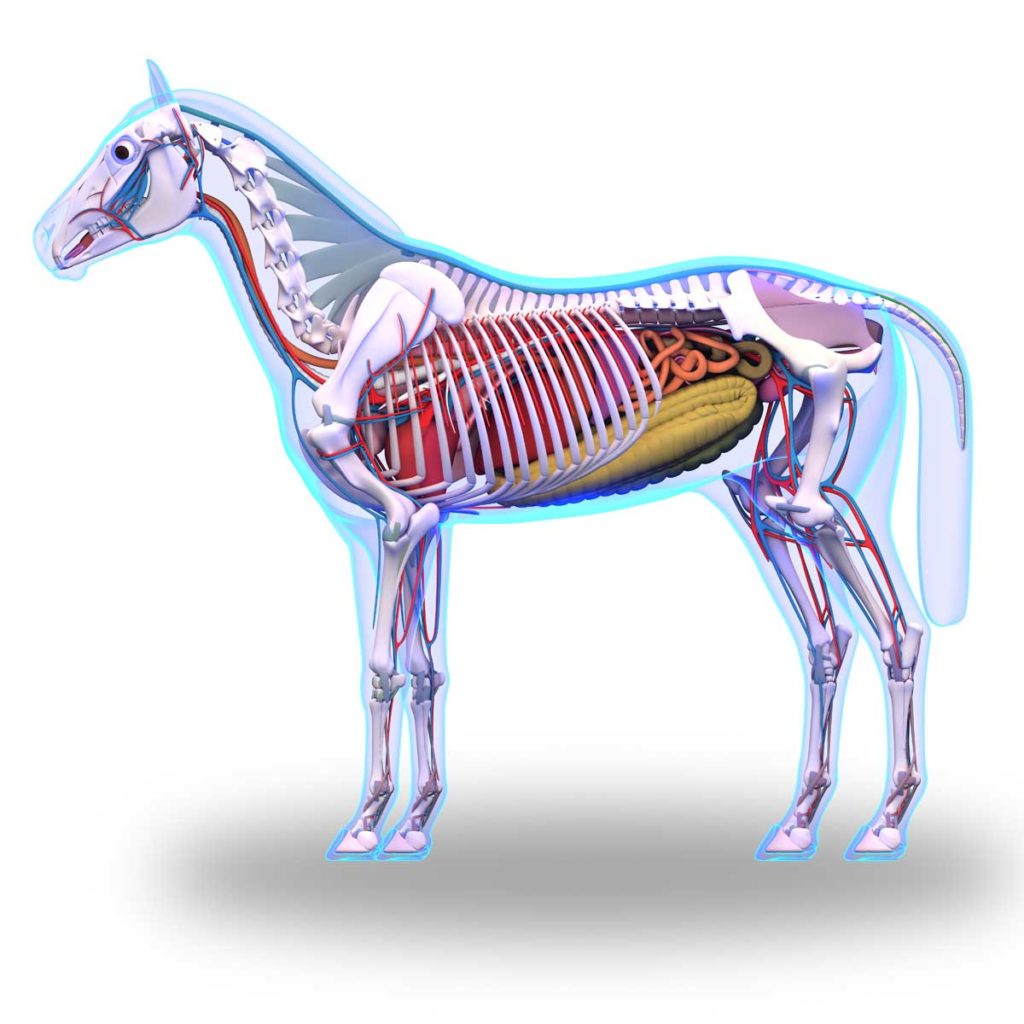
Digestive systems exhibit a fascinating diversity across different species, reflecting their dietary adaptations. Herbivores, in particular, present varied digestive designs to efficiently break down plant matter. Monogastric animals like horses have a distinct set of physiological features that differ significantly from the complex ruminant systems found in cows and sheep, which are characterized by a multi-chambered stomach.
Unique Characteristics of Monogastric Digestive Systems
- Simplified gastrointestinal tract optimized for digesting soluble nutrients like carbohydrates and proteins.
- Initial enzymatic digestion occurring in the stomach, with further processing in the intestines.
- Dependence on the hindgut’s fermentation capabilities to break down fibrous plants.
Distinct Digestive Mechanisms of Monogastrics and Ruminants
Monogastric animals, in contrast to ruminants, have a singular, less complex stomach designed for efficient digestion. This evolutionary choice reflects the trade-off between the ability to process food effectively and the metabolic cost of maintaining elaborate digestive architectures.
Physiological Features of Monogastric Herbivores
Monogastric herbivores, such as horses, exhibit specialized features that facilitate their digestive processes:
- A straightforward stomach structure that secretes essential digestive enzymes and acids.
- An extended small intestine that ensures optimal nutrient absorption.
- Well-developed cecum and colon that compensate for the absence of a rumen, playing a key role in fermenting fibrous materials.
Comparing Equine and Ruminant Digestive Adaptations
Although both horses and ruminants consume plant-based diets, their digestive systems have distinctly different adaptations:
- Stomach Configuration: The equine digestive system features a single stomach chamber, as opposed to the ruminant’s four-chambered setup.
- Fermentation Site: Horses ferment plant fibers mainly in the hindgut, while ruminants perform this process in the rumen, prior to enzymatic digestion in the small intestine.
- Enzymatic Sources: Ruminants depend predominantly on microbial enzymes for digestion, whereas horses utilize a combination of microbial and intrinsic digestive enzymes.
Benefits of a Monogastric System
The streamlined monogastric system of animals like horses offers distinct benefits:
- Reduced metabolic demands for maintaining a less elaborate stomach.
- Capability to process frequent, smaller meals, which is congruent with their continuous grazing habits.
- A more varied diet, extending beyond just fibrous plants.
Efficiency of Ruminant Digestion
Ruminants excel in extracting nutrients from high-fiber diets through their specialized digestive systems:
- Their intricate fermentation process ensures comprehensive breakdown of robust plant fibers.
- The rumen’s microbial population plays a crucial role in enhancing nutrient extraction from plant-based feed.
- The act of rumination, or cud-chewing, further aids in the mechanical processing of their food.
Appreciating the distinctions between the digestive systems of monogastric animals like horses and ruminants has practical implications in fields like animal husbandry and veterinary science. A deeper understanding of their digestive mechanisms allows for better-targeted care and feeding practices, thus enhancing their health and productivity.
Addressing Equine Digestive Disorders
Equine health can be compromised by various gastrointestinal disorders that impact their comfort and capabilities. Prompt recognition and management of such disorders are essential to safeguard the welfare of these animals. Key digestive issues include obstruction-related colic, sand ingestion complications, and enteric inflammation, each with distinct clinical manifestations and remedial protocols.
Managing Obstruction-Induced Colic
Obstruction colic is characterized by a blockage in the intestines, often due to inadequate water intake or insufficient fiber in the diet. Symptoms such as diminished fecal production, apathy, and evident distress necessitate interventions like rehydration therapies and, in extreme cases, surgery.
- Provision of ample water to avert compacted stools.
- Inclusion of fiber-rich forage in daily feeding for better intestinal transit.
- Vigilant monitoring for early indicators of colic to enable timely veterinary assistance.
Counteracting Sand Accumulation in the Gut
Equine ingestion of sand with feed can lead to digestive upset and obstructions. Prophylactic measures encompass feeding above ground levels and steering clear of grazing in sandy areas. Symptoms overlap with those of obstruction colic but may also involve loose stools or recurrent rolling. Management strategies range from administering psyllium to aid in sand expulsion to more intensive medical intervention.
- Utilizing raised feeders to reduce sand intake.
- Regular psyllium administration as a preventive tactic.
Alleviating Enteritis: Inflammatory Intestinal Conditions
Enteritis denotes the inflammation of the intestinal mucosa, commonly triggered by infections. Consequences include severe dehydration, electrolyte derangements, and potential shock. Observable signs are diarrhea, fever, and a decline in appetite. Prompt veterinary intervention is crucial, with treatment regimens potentially encompassing antibiotics, anti-inflammatories, and supportive care.
- Quarantining affected equines to control infectious spread.
- Upholding stringent sanitation to diminish infection risks.
Proactive Nutritional and Health Strategies
Preventative approaches are paramount for equine digestive health. Sustaining digestive integrity involves consistent veterinary examinations, deworming, and dental maintenance. Dietary modifications should emulate equine instinctual foraging behaviors to mitigate gastrointestinal complications.
- Establishing a regular health upkeep regimen.
- Reforming feeding methods to smaller, recurrent portions.
- Striking a nutritional balance with forage, concentrates, and additives.
Surveillance for Prompt Issue Identification
Diligent observation of a horse’s conduct and physical state is critical for early identification of digestive issues. Recognizing the precursors of colic, variations in fecal matter, or shifts in feeding behavior can expedite intervention, potentially preventing more severe conditions.
- Consistent assessment of the horse’s demeanor and vitality.
- Attentive tracking of dietary habits and stool production.
- Immediate veterinary consultation upon noticing unusual conduct.
Knowledgeable attention to equine digestive needs and potential challenges empowers caretakers to avert prevalent digestive disturbances. Active dietary, environmental, and healthcare management is the foundation of preserving robust digestive health and the overall well-being of horses.
Proactive Nutritional Approaches for Equine Digestive Wellness
Ensuring the digestive wellness of horses involves a comprehensive approach to their care. With a focus on appropriate nutrition and dietetics, we can support a healthy gastrointestinal system that is better equipped to utilize nutrients and ward off digestive disturbances.
Customized Dietary Planning for Horses
Proper dietary planning is crucial for meeting the specific digestive requirements of horses. This involves evaluating the horse’s activity level, health status, and individual dietary needs to avoid nutritional imbalances that could compromise their health.
- Regular assessments of forage to guarantee it meets the horse’s energy and dietary needs.
- Monitoring the horse’s body condition to adjust feeding regimens accordingly.
- Incorporating essential vitamins and minerals to bolster metabolic processes.
Ensuring High-Quality Feed
Providing high-quality feed is a fundamental aspect of maintaining equine digestive health. The choice of hay and grains should reflect their nutritional content, freshness, and compatibility with the horse’s digestive system. A varied forage diet can also contribute to a well-balanced gut by supplying different types of fibers.
- Selecting dust- and mold-free hay to avert respiratory and digestive complications.
- Offering a mix of forages, including timothy, alfalfa, or orchard grass, for nutritional diversity.
Emphasizing Adequate Water Consumption
Hydration plays a pivotal role in the equine diet, as water aids in the digestion and absorption of nutrients and helps prevent digestive blockages. Constant access to clean, uncontaminated water sources is a must to promote sufficient hydration and support the digestive process, especially when horses consume dry feed.
- Regularly checking water consumption, especially during temperature fluctuations or routine adjustments.
- Maintaining the cleanliness of water troughs to stimulate drinking habits.
Beneficial Supplements and Digestive Aids
Dietary supplements can enhance intestinal health by supplying specific nutrients that might be lacking in the horse’s primary diet. The use of probiotics, in particular, can aid in sustaining a healthy microbial balance in the hindgut, which is key for efficient digestion and absorption.
- Integrating prebiotic and probiotic supplements to nurture gut flora.
- Assessing the potential benefits of anti-inflammatory supplements such as omega-3 fatty acids.
Adaptive Environmental Management
A horse’s living environment has a significant impact on its digestive health. Stress from confinement or social strain can affect gut function and microbial equilibrium. Mimicking a natural habitat as closely as possible can help alleviate these stressors.
- Ensuring horses have sufficient time for free movement and natural foraging.
- Reducing stress by maintaining consistent routines and stable social groupings.
Adopting these dietary and lifestyle strategies can greatly benefit the digestive system of horses, promoting their overall health and allowing them to thrive in their environments.
Exploring the anatomy of horses can be quite intriguing, from their skeletal framework to their digestive systems. If you’re curious about other aspects of equine biology, we have a variety of resources available. Discover the details of their extremities in our article about how many toes a horse has, delve into the complexity of their skeletal system by reading about how many bones a horse has, or learn about their dental makeup by exploring how many teeth horses have. Each piece of information contributes to a fuller understanding of these magnificent creatures.
Conclusion: The Significance of Understanding Equine Digestion
Understanding the horse digestive system, including its single stomach anatomy and the number of stomachs in a horse, is pivotal for proper care and nutrition. Recognizing the intricacies of equine digestion and the layout of the horse gastrointestinal tract, including the equine stomach chambers, can enhance our management practices and ensure our equine partners remain healthy and thrive.



